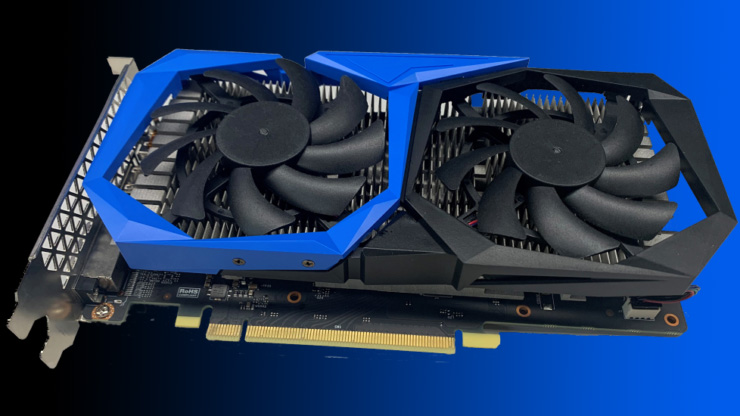GPU manufacturers are shipping the first Intel graphics cards to OEMs right now (Updated)
An important first step on the road to a genuine three-way graphics card market.

Update: It seems that despite clear similarities between Colorful graphics cards and the Intel Xe design pictured above, Colorful is not manufacturing Intel Iris Xe graphics cards.
In a statement posted on Facebook (via Videocardz), Colorful clears up the case of mistaken identity.
The Intel Iris Xe website mentions only Asus by name, referring to the card pictured above as being from "other partners." The image, which shows a card not unlike Colorful's Tomahawk RTX 2060, is reportedly said to have been initially had the word 'colorful' in the filename, too, but that may have been a red herring unlike no other and has since been removed.
Original story: The first AIB boards based on Intel’s Xe graphics have been launched. Asus and an unnamed partner are the first to jump in with Intel, creating boards based on Intel’s initial DG1 GPU and branded Intel Iris Xe. The board pictured above in particular, with its dual-fan cooler, has the walk and talk of a full-feature add-in graphics card.
These aren’t the first add-in boards based on Intel’s Xe technology, but previous examples have been built in-house by Intel. These are the first ones for retail, and the new boards represent a tentative first step by Intel to emulate the extensive ecosystem of partner boards offered with GPUs from graphics specialists AMD and Nvidia. For now, these cards are OEM models available only to system builds and can’t be bought by mere mortals separately.
The DG1 GPU, of course, is also found in Intel's Tiger Lake laptop CPUs and is thus a known quantity. It operates very much at the lower end of the discrete graphics market. However, for this implementation the number of execution units has been reduced slightly from 96 to 80.
Regardless, DG1 is not designed to top the performance table but rather to add a modicum of 3D and multimedia performance at an affordable price. Intel says the boards offer three display outputs, hardware video decode and encode acceleration, including AV1 decode support, Adaptive Sync and Display HDR support, plus artificial intelligence capabilities thanks to DP4a deep-learning inference acceleration. The boards come with 4GB of VRAM and run at over 1,700MHz core clock.
Keep up to date with the most important stories and the best deals, as picked by the PC Gamer team.

Best CPU for gaming: the top chips from Intel and AMD
Best graphics card: your perfect pixel-pusher awaits
Best SSD for gaming: get into the game ahead of the rest
Ultimately these boards are more significant for what they imply for the future rather than any gaming performance they deliver today. Instead, it’s the upcoming Xe DG2 board that could just shake up the graphics establishment.
Data contained in a recent Intel graphics driver indicates the top DG2 board will offer fully 512 Intel-style execution units, implying a graphics card that could be competitive with the likes of the Nvidia GeForce RTX 3070.
Anyway, these partner DG1 boards at the very least imply Intel remains committed to pushing forward with Xe. Given Intel’s broader struggles and its impending change of leadership, that’s surely pretty significant. For we gamers, the emergence of a third player in the graphics market to take on AMD and Nvidia would make for extremely welcome competition.

Jeremy has been writing about technology and PCs since the 90nm Netburst era (Google it!) and enjoys nothing more than a serious dissertation on the finer points of monitor input lag and overshoot followed by a forensic examination of advanced lithography. Or maybe he just likes machines that go “ping!” He also has a thing for tennis and cars.

